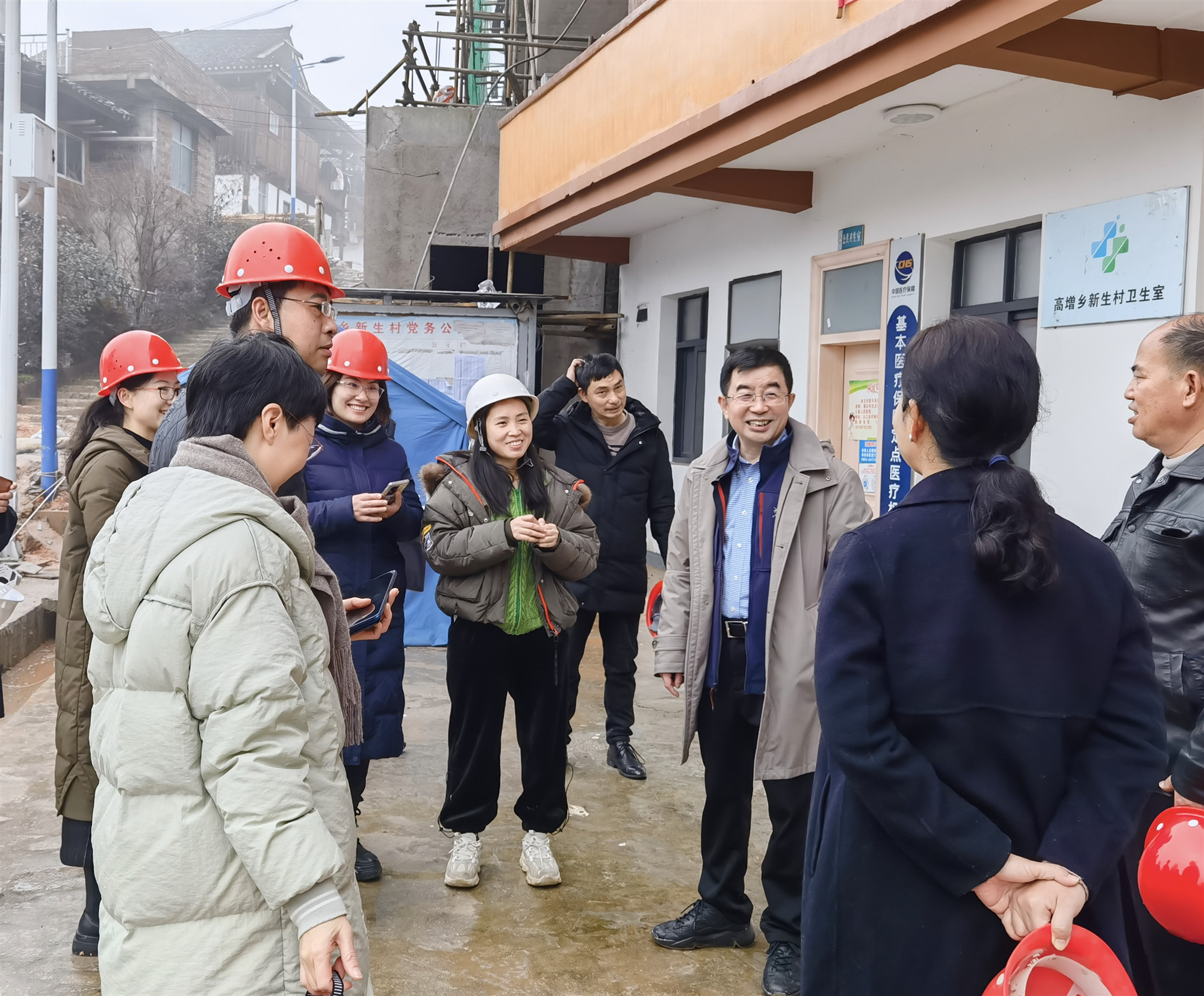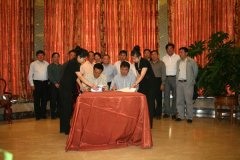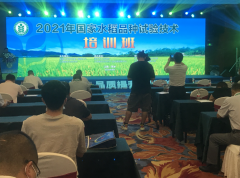乡村振兴战略实施中加大科普力度切实提升农民
全国政协无党派界人士研究小组
科学素质是国民素质的重要组成部分,是社会文明进步的基础。 习近平总书记指出:“没有全民科学素养的普遍提高,就难以建设一支高质量的创新大军,就难以实现科技成果的快速转化。” 提高科学素养,有利于公民树立科学的世界观和方法论,对于增强国家自主创新能力和文化软实力,对于建设社会主义现代化强国具有重要意义。 提高公民科学素质是一项系统工程,需要从各方面找差距、补短板。 农村一直是我国科技进步、科普普及和公民科学素养的“低地”。 实施乡村振兴战略,人才是关键,农民是主体。 要把农村人力资本开发放在首位,着力提高农民科学素养,不断加强农村科普,加快农村人才振兴,为全面推进乡村振兴、实现农业农村现代化提供基础支撑。现代化。

2022年1月22日,全国政协无党派委员调研组调研黔东南从江县高增乡新生村天鹅山书院乡村振兴科普示范基地建设情况贵州省苗族侗族自治州。
一、农民科学素质问题是制约农村现代化的突出短板。
(一)适应科技强国战略,迫切需要科技创新与科普齐飞。 “科技创新热、科普冷”的问题亟待解决。
党的十八大以来,党中央把科技创新摆在国家发展全局的核心位置。 党的十九届五中全会提出加快科技强国建设,把科技创新的地位和作用提升到前所未有的战略高度。 国家科技创新的基础在人,科普为创新人才成长创造沃土。 习近平总书记强调:“科技创新和科普是实现创新发展的两翼,要把科普放在与科技创新同等重要的位置。” 科普就是普及科学技术知识,倡导科学方法,传播科学思想,弘扬科学。 精神活动是不断增强创新能力和国际竞争力的基础工程。 但由于历史和现实原因,目前我国全社会对科普重视不够。 与科技创新相比,科普在资源投入、能力建设、体制机制等方面还存在较大差距。“十三五”期间,我国科技研发投入(R&D)科普经费年均增长11.48%,科普经费筹集金额增长4.33%。 这在一定程度上反映了重科学研究、轻科普,科普与科学研究脱节的现象依然存在。 存在乃至愈演愈烈的趋势,已成为制约我国科技创新、实现转型发展的重要因素。
(二)与农业农村现代化目标相比,人的现代化意义更加凸显,“重生产技术、轻文明生活”的科普问题成为制约
党的十九大报告提出“加快农业农村现代化”。 与此前单独提及“农业现代化”不同,这是党和国家文献中首次明确增加“农村现代化”的内容,并将“农村现代化”与“农业现代化”结合起来。 “三农”作为新时代“三农”总体目标。这一重大战略部署,标志着我国“三农”工作进入新的发展时期。当前,我国“三农”工作进入了新的发展时期。全面建设社会主义现代化国家已经踏上新征程,但是,“没有农业农村现代化,就没有整个国家的现代化。”推进农业农村现代化已成为全面建设社会主义现代化国家的重大任务现代化不仅是“物”的现代化,更是“人”的现代化,实现农业农村现代化,短板在农业,困难在农村,关键在农村农民的现代化不仅包括生产、生活方式的现代化,还包括观念、思维方式的现代化,其中思维方式的现代化是最根本、最关键的因素。 与传统意义上的科普不同,现代科普“不仅要普及和传播科学知识,更要普及和弘扬科学精神”。 “科学精神是可以通过科学知识和科学方法的传播来慢慢培养的。” 科普必须面向公众,必须融入生产生活。 从实际情况看,我们在农村科普工作中面临着“一条腿长、一条腿短”的问题。 一方面,围绕农业技术推广普及,无论是法律规范、制度建设、人才队伍、还是财政投入,都已形成较为完善的工作体系。 促进农业科研成果和实用技术在农业生产中的应用,保障农业发展。 为推动农业现代化发挥了重要作用。 另一方面,对农民现代生活方式和科学精神重视不够。 过分注重科普生产功能的直接后果是农民掌握了一定的现代农业技能,但尚不具备科学素养。 “人”的现代化与“业”的现代化脱节,从长远来看必将制约农业农村。 现代化。
(三)与世界主要发达国家水平相比,我国科普基础和环境存在较大差距,工作孤立、资源碎片化问题较为突出。
科普是一项系统工程。 尽管近年来我国科普事业发展迅速,但与世界主要发达国家相比仍存在一定差距。 中国科协第十一次中国公民科学素养抽样调查结果显示,2020年中国公民具有科学素养的比例达到10.56%,比2015年的6.20%上升4.36个百分点。完成“十三五”规划,规划提出到2020年“公民具有科学素养的比例超过10%”的目标。看美国的数据,1988年,美国公民具有科学素养的比例为10%; 2000年,这一数字为17%; 2016年,这一比例达到28%。 数据差距的背后是科普工作基础和环境的差异。 从参与主体来看,与欧美等主要发达国家科普活动资金主要来源为捐赠、各类专业机构承担大量科普工作不同,我国科普经费主要是政府投资,尤其是受碎片化体制的影响。 从此,科普被认为是政府的主要职责。 科技团体、高等院校、研究机构、企业对科普工作重视和参与不够。 全社会参与的科普工作发展格局尚未形成。 从科普方式来看,国外越来越强调科普与非正式教育的融合。 许多国家积极倡导和鼓励科普机构通过政府与社会、科技界与媒体、科普机构与正规科普教育寻求科普合作。 机构间的多种类型合作,保证了科普项目能够充分利用多种资源的优势,融合各种先进理念。 在我国,非正规教育领域的科普活动与学校的正规教育相对分离。 部门与部门、行业相互割裂,力量分散。 科普合力尚未形成。 科普资源开发与共享工程、大众传媒科技传播能力建设工程薄弱,尚未形成科普资源共建共享的长效机制。 农村科普资源和实践基地缺乏的问题更为严重。
(四)比较我国城乡居民科学素质,应优先考虑农村科学素质的提高。 必须弥合城乡差距和群体差异的科学素质差距。
我国公民的科学素养不仅在整体上远远落后于世界发达国家,而且城乡之间、地区之间、性别之间也表现出明显的不平衡。 2020年,东西部地区公民科学素养差异为4.83个百分点,城镇居民与农村居民的差距高达7.3个百分点。 此外,不同地区、不同年龄段之间的不平衡问题也十分突出。 例如,60-69岁人群中只有3.52%具有科学素养,远低于平均水平。 老年人“科学素养差距”问题突出。 公民科学质量的结构性失衡会降低整体认知和实践水平。 因此,必须更加重视农村特别是西部欠发达地区的科普工作,逐步消除城乡之间、群体之间科学素养的“贫富差距”。 只有这样,才能实现国民素质的全面提高,为社会基本实现奠定基础,为社会主义现代化建设提供坚强支撑。
二、抓住并用好乡村振兴战略实施过程中乡村科普的重要窗口期
(一)抓住乡村振兴战略机遇期,以抢占发展主动权、系统规划设计为重点,推进乡村科普
当前,我国正处于“两个一百年”奋斗目标的历史交汇点。 “十四五”规划聚焦到2035年基本实现社会主义现代化的长远目标,为全面推进乡村振兴、加快农业农村现代化作出了巨大贡献。 系统部署。 我国乡村振兴战略第一个五年规划——《乡村振兴战略规划(2018-2022年)》已进入规划最后阶段,各项任务均处于完成或定型阶段。 在这个重要时间点,加强农村科普工作关键是要抓住乡村振兴战略机遇期,对标科技强国战略和农业农村现代化目标任务, 《全民科学素养行动计划(2021-2035年)》要求,加强农村科普工作经常性研究和系统规划,加快研究编制加强农村科普、提高农民素质专项规划科学素养,做好新时代农村科普工作的顶层设计,明确未来5-15年农村科普工作的基本原则、总体目标、重点任务和保障机制。制定提高农民科学素养和科学素养,部署一批重大工程、重大活动、重大平台、重大政策,为农村科普工作提供指导和支撑。 同时,在已落实乡村振兴农民科学素养行动的基础上,积极推动将加强农村科普、提高农民科学素养专项规划的重要内容纳入乡村振兴总体规划。规划我国下一阶段乡村振兴战略,从乡村振兴入手。 在总体战略中系统把握、统筹推进农村科普工作,切实提高农民文明生活、科学生产、科学管理的能力。
(二)融入乡村振兴转型期,推进农村科普重点寻求政策支持、促进区域协调
打赢脱贫攻坚战、全面建成小康社会后,为进一步巩固和扩大脱贫攻坚成果,持续推动贫困地区发展和农村全面振兴,中央对脱贫县设立五年过渡期。 也就是说,2021年至2025年,我国农村特别是贫困地区将按照“脱帽子不脱责任、脱帽子不脱政策、脱帽子不脱政策”的要求。不救助、脱帽不监管”,主要救助政策保持总体稳定。 要把科普工作作为切实增强贫困地区发展动力和发展能力的重要抓手,融入贫困地区五年过渡期的制度设计和政策安排,推动农村特别是贫困地区科普工作高质量发展,整合资源,凝聚支持。 要进一步以160个国家乡村振兴重点县为重点,将科普纳入集中支持范围,全面提拔科技特派员和科技副乡镇长(挂职),探索推动新科普工作。科普人员理念“县管乡、下沉村”机制,充分整合中央、地区、省级政策支持,加大倾斜,提供资金保障,合力推动重点县增强自主发展能力形成现代文明生活方式。 要结合当前易地扶贫后续支持重点工作,把科普融入开放一体化的安置社区建设。 要用好东西部协作、对口支援、社会力量参与的救助机制,把科普合作纳入新阶段。 各地将全面深化东西部合作框架协议,重点围绕科技博物馆建设、科技人才交流、培训帮扶、科普惠农等工作。 开展网站、学术交流、科普书店等全方位帮扶合作,将东部地区社会科普资源引入欠发达地区特别是农村地区,探索跨区域科普合作模式,在更大空间构建科普共同体,实现科普工作大协同、科普阵地全覆盖、科普渠道畅通,不断提高科普资源的社会经济价值。
(三)抓住乡村振兴试点示范期,以创新体制机制、树立样板典型为重点,推进乡村科普。
近年来,围绕农业产业融合、数字乡村、绿色乡村、乡村治理等领域,国家和地方政府不断开展试点村、示范村建设。 我们按照先行先试、总结推进的思路,推动乡村振兴。 探索创造有益的经验。 2020年7月,中国科协办公厅印发《关于深入开展全国科普示范县(市、区)的通知》,这意味着我国科普工作也进入了一个阶段坚持改革创新、示范引领发展。 要进一步把握农村科普工作发展趋势,将农村科普示范创建纳入国家和省乡村振兴试点示范点建设体系,加快国家科普示范工作向基层延伸和倾斜深入农村,打造一批农村科普工作示范。 模式,实现乡村振兴和科普试点示范政策集成创新。
(四)面向乡村振兴全面发展时期,推进乡村科普重点完善发展体系、重构乡村文明
在农业农村现代化目标框架下推进农村科普,必须把握新时代科普发展新趋势、新特点,着力提高农民科学文化素养,进一步整合科普阵地,构建科普阵地。强大科普队伍,创新科普方式,完善科普机制。 着力构建主体多元、手段多样、供给优质、机制有效的全方位全日制农村科普工作体系,推动农村科普从“知识填充型”向“质量提升型”转型升级“共享型”,打造一支适应农业农村现代化发展要求的高素质农民队伍。 要提高农村科普的针对性和实用性,围绕农村群众生产生活所需的吃、穿、住、行、安全、健康和科学知识等切身利益开展科普,让科普贴近生活、贴近群众需求。 希望。 让农民感受到生活中的科学、生产中的科学、身边的科学,逐步树立科学意识。 要科学选择农村科普教材,避免使用生涩的专业术语,采用通俗易懂的语言,增强教材的可读性和可视性,让科普知识易懂、易学、易记。 ,并且要实用。 要把农村科普工作纳入新时代农村精神文明建设,以保护生态环境、节约能源、绿色生产、健康、改变为重点,实施乡村振兴农民科学素质提升行动。风俗习惯等,旗帜鲜明反对各种陋习和陈规陋习,全面彰显科普的知识价值、社会价值、文化价值,引导形成良好的社会氛围,建设社会主义乡村文明具有新时代中国特色。 要更加注重农村青少年特别是留守儿童科学素质培养,把科学精神融入农村青少年教育全链条,为乡村振兴提供高素质人才储备。 将科普纳入农村留守老年人关爱服务体系,重点提高信息素养和健康素养,提高农村老年人的生活质量,增强农村老年人的获得感、幸福感、幸福感。安全。
三、以五大举措为引领,推动农民科学素养迈上新台阶
(一)加大防疫科普,提升农民健康素养
人民健康是社会文明进步的基础,是国家富强、民族富强的重要标志。 党的十九大作出实施健康中国战略的重大决策部署后,我国出台了《健康中国2030》规划纲要、《健康中国行动(2019-2030年)》等文件,其中明确提出,实施健康知识普及行动是“健康中国战略”。 中国行动的主要任务之一。 2020年,面对突如其来的新型冠状病毒肺炎(COVID-19)疫情,中共中央把人民群众生命安全和身体健康放在第一位,迅速打响一场人民战争、总体战、阻击战,坚决打赢疫情防控阻击战。控制疫情。 国家迅速建立各级疫情信息发布机制,及时解读防控政策,大力开展健康科普,有力促进了健康素养水平的提高。 相关数据显示,2020年全国城镇居民健康素养水平为28.08%,农村居民为20.02%,东、中、西部地区居民健康素养水平分别为29.06%、21.01%、分别为16.72%。 增速创历史之最。 但以“健康中国”战略为坐标,农民健康素养仍是全民健康面临的短板和瓶颈。 特别是在常态化疫情防控背景下,进一步推动健康中国战略与乡村振兴战略深度融合,必须不断提高农民健康素养。
一是进一步探索建立农民健康常态化科普机制,持续广泛普及防疫知识,增强公众自我防护意识和防护能力,引导公众正确理性看待疫情,注入为打赢疫情防控阻击战注入更多理性力量。 。 二是加强疫情防控科普与科研联动,统筹运用多种传播渠道,充分发挥传统媒体权威性强和新兴传播形式活泼、覆盖面广的优势渠道,开展线上线下科普,确保科普“不间断”。 三是以防疫科普为契机,扩大农民健康素养科普范围,将农村健康科普纳入健康扶贫工作体系,送健康意识和高水平知识。将优质医疗资源下沉到农村,为农村医疗服务提供广泛持久的支持;开展职工农民健康教育,让健康教育入耳入脑,引导农民更新生活观念,养成健康的生活习惯和生活方式。 。
(二)加大防灾科普力度,提升农民安全素养
我国农村和贫困地区是灾害多发地区,也是防灾减灾救灾的薄弱环节。 我国灾害造成的人员伤亡和经济损失80%以上来自农村,70%以上的气象灾害发生在农村特别是西部地区。 目前生活在农村地区的居民,主要是妇女、儿童和老人,缺乏自卫能力,最容易受到自然灾害的影响。 加大对农民防灾减灾科普宣传力度,是弥补农村防灾减灾救灾能力短板、有效抵御自然灾害风险的重要内容。
一要加快研究制定农村综合减灾防灾救灾预案,将防灾减灾救灾科学普及全面纳入应急工作统筹协调机制水平。 各地要结合本地气象条件、地理环境、地质结构和水土资源特点,细化防灾减灾救灾科普工作重点。 按照平战结合的原则,储备和传播优质防灾减灾救灾科普内容资源。 二是将科学普及农村防灾减灾救灾纳入农村防灾减灾规划管理,加强农村自然灾害监测预报预警,推动向群众发布预警信息。深入基层,力争实现预警信息发布直通式服务,打通预警信息发布最后“一步”。 三是完善农村防灾减灾救灾科普教育协调机制,建立农村灾害科普专家队伍和灾害信息员队伍,协调各方力量,及时开展灾害发生时的政策解读、知识普及、舆论引导。四是组织开展防灾减灾救灾基础知识、防灾避灾、自救互救技能等知识培训。等,定期开展防灾减灾救灾科普,破除妨碍防灾减灾救灾的观念和行为,破除不利于防灾减灾的观念和行为。抗灾救灾工作大大增强了村民防灾、减灾、救灾的意识和能力。 开展全国“防灾减灾日”等宣传教育活动,创新活动方式方法,提高全社会防灾减灾救灾意识。
(3) Increase the popularization of financial knowledge and enhance farmers' financial literacy
To comprehensively promote rural revitalization, we must solve the problem of where the money comes from. In 2019, five departments including the People's Bank of China issued the "Guiding Opinions on Financial Services for Rural Revitalization", which put forward clear requirements for financial services to serve rural revitalization. We must develop inclusive finance under the strategic framework of rural revitalization and allocate more financial resources. to key areas and weak links in rural economic and social development. A prominent problem facing the development of inclusive finance is that the financial literacy of rural residents and enterprises is generally low, which is mainly reflected in the lack of financial knowledge, relatively low financial consumption willingness, low financial consumption skills, and lack of awareness of the protection of financial consumer rights. 方面。 Among them, rural poor people and disabled people and other groups have lower financial literacy, and they are the key service targets of inclusive finance. In order to better leverage the role of inclusive finance in supporting rural revitalization, we must focus on improving farmers' financial literacy, strengthen the popularization and publicity of financial knowledge, and build a social environment that is conducive to promoting inclusive finance to support rural revitalization.
First, the actions to improve farmers' financial literacy have been included in the construction of the inclusive financial reform pilot zone. By organizing financial knowledge to the countryside, educational exhibitions on illegal financial activities and other activities, we can enhance farmers' credit concepts and risk awareness, and raise awareness of rural small and medium-sized financial institutions, Internet finance, Awareness and ability to prevent financial risks such as illegal fund-raising. Second, when financial institutions provide services to farmers, they should give full play to the role of education and guidance, so that farmers can better manage their own assets and avoid excessive debt. At the same time, when farmers suffer infringement in the process of financial services, they can receive timely protection through financial consumer protection agencies. The third is to explore the establishment of a rural financial services commissioner system and encourage university teachers, researchers and financial institution practitioners with inclusive financial knowledge to go to the countryside to carry out financial knowledge training to improve farmers' ability to use financial knowledge and financial products.
(4) Increase efforts to popularize the science of carbon peak and carbon neutrality, and enhance farmers' ecological literacy
Achieving carbon peak carbon neutrality is an extensive and profound economic and social change. For a long time, the main battlefields for energy conservation and carbon reduction have been in the fields of industry, energy, transportation and other fields. The issue of emission reduction in agriculture and rural areas has not received enough attention. However, according to statistics from the Food and Agriculture Organization of the United Nations, the greenhouse gases released by agricultural land exceed 30% of the total global man-made greenhouse gas emissions, and agricultural ecosystems can also offset 80% of greenhouse gas emissions caused by agriculture. As a major agricultural country in the world, my country's agricultural greenhouse gas emissions account for about 12% of total global agricultural emissions, making it the second largest agricultural emitter. There is huge room for energy conservation and carbon reduction in agriculture and rural areas. At the same time, the potential to improve farmland carbon sequestration and sequestration through measures such as conservation tillage, straw returning, organic fertilizer application, and strengthening agricultural management is also huge, and will surely become a new front for my country to implement the "double carbon" goal. The key to promoting rural revitalization in a green, energy-saving, emission reduction, and low-carbon direction is to improve farmers' ecological literacy.
The first is to bring carbon peak carbon neutrality knowledge into rural areas into the construction of "clean countryside" and integrate it into farmers' daily lives. Through a combination of online and offline methods, "down-to-earth" low-carbon life promotion and environmental protection knowledge training are carried out to let villagers A deeper understanding of the low-carbon concept. The second is to carry out activities such as the demonstration creation and advanced selection of "zero-carbon villages" and "zero-carbon towns" to encourage villagers to consciously develop green and low-carbon living habits. The third is to integrate "double carbon" science popularization into agricultural production, accelerate the promotion of agricultural emission reduction and carbon sequestration, strengthen the improvement of rural living environment and the prevention and control of agricultural non-point source pollution, vigorously develop ecological agriculture, green agriculture, low-carbon agriculture and other modern agriculture, and integrate agriculture into Efficiency improvement, farmers' income increase, and rural greening are unified to promote the low-carbon transformation of rural energy structure, continuously increase the supply of ecological products and services, and allow farmers to gain more benefits from ecological protection.
(5) Increase the popularization of digital technology and enhance farmers' digital literacy
Since the 18th National Congress of the Communist Party of China, the Party Central Committee has attached great importance to the construction of rural informatization. As an important starting point to promote and enhance the modernization of agriculture and rural areas as a whole, digital countryside is not only the strategic direction of rural revitalization, but also an important part of building Digital China. It is also the core of Digital China. and rural revitalization strategies. In 2019, the General Office of the CPC Central Committee and the General Office of the State Council issued the "Digital Rural Development Strategy Outline", which clarified ten key tasks for the implementation of the digital rural strategy, marking the "acceleration button" for my country's digital rural construction. One of the keys to building a digital countryside is to improve farmers' digital literacy, and to cultivate new farmers, second-generation farmers, agricultural makers, and new rural businessmen who understand information technology, e-commerce, new marketing channels, and smart agriculture as a It is an important support for promoting digital rural construction and an endogenous driving force for rural revitalization.
The first is to establish a new digital farmer learning platform, combine expert resources, explore the "platform + expert + service" business model, carry out low-threshold and intelligent agricultural digital skills training, improve the popularity of online cultivation, and enhance farmers' safe access to the Internet. Digital awareness and abilities for scientific Internet use, online entrepreneurship, etc. The second is to carry out activities such as "Cyber Security in Rural Areas" to popularize network security knowledge and enhance network security prevention awareness. By holding special lectures and training courses on network security, producing and distributing brochures, and online video presentations, we will enhance farmers' ability to identify and protect themselves against illegal activities such as Internet rumors, telecommunications fraud, and information theft. The third is to establish a new technology entrepreneurship and innovation training system for farmers, cultivate a group of Internet companies and their public welfare foundations, and provide training on new agricultural concepts, new technologies and new applications for family farmers, large farmers and entrepreneurial young farmers, and improve digital skills. Operational and management capabilities. Carry out activities for digital agricultural rural talents to go to the countryside to encourage and guide college students, volunteers, and returning employment personnel to participate in digital rural construction.
(Convener of the National Committee of the Chinese People's Political Consultative Conference's non-partisan constituency task force, Lian Yuming, and members Jiang Ying, Wei Dingmei, Liu Hongyu, Xie Hong, Xie Jing, Ma Dongping, Huang Lianxi, Yan Wangjia, Wei Qingsong, Ma Xueping, and Fan Shukui)


